|
I was very pleased that Nihon Vogue has put out a book featuring the innovative sashiko of AYUFISH int. Sashiko Modern Style 31: Sashiko Design Pattern Book was released in August 2021. 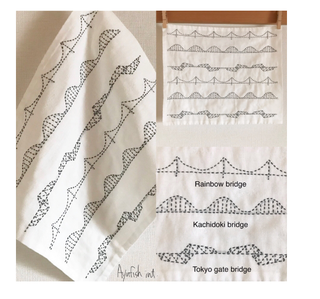 From the AYUFISH int. website From the AYUFISH int. website I became intrigued by this sashiko artist after noticing her unique work in Chiku chiku tanoshimu ito asobi: Hibi no sashiko komono (Fun With Thread and Sewing, Boutique-sha, 2020). She uses traditional patterns to create unique innovative designs, often textile-like, with mesmerizing effect and stylish arrangement of colour. Have a look at the Gallery section on her website to see what I mean. The book starts with a two-page photographic pattern index, a favourite layout feature of mine as it allows you to take in all patterns at a glance. It has three chapters devoted to designs categorized into Hitomezashi (one stitch), Kugurizashi (threaded stitch) and Moyozashi (pattern stitch), with photographs of all designs. Following these are sections on tools, and guides to techniques and patterns for making the designs or items in each chapter, including actual-size design grids. All designs are named in English as well as Japanese. So in Chapter 1 on hitomezashi, you find names like Maze, Woodwork and Peanuts amongst others. Skyscraper is a sturdy practical cloth that can be used as a towel, which reflects hitomezashi’s roots as jizashi (ground stitch), a method of strengthening fabric to use for practical purposes. Number made me laugh out loud with its digitalized numerals stitched hitomezashi style (my sashiko teacher always says sashiko is all about maths!). Floral cross is one of AYUFISH int.’s favourite stitches, and in Floral Cross 1 and Floral Cross 2 she adapts it beautifully to achieve an embroidered effect in a way that reminds me very much of its roots in traditional jizashi sashiko from Tohoku. In the second chapter Kugurizashi (threaded stitch) she varies the length of the woven thread to create different effects. Boldly, as in Spiral and Continuous & Layer, with overlapping lines that give a sense of movement and texturing, or spaced in such a way as to achieve a woven, textile-like effect such as in Herringbone. In Mountain & Ranges, the woven thread is used to shape the outline of mountain peaks and achieve variations in colour and density. Chapter 3, Moyozashi, is really interesting because of the originality of the designs. Moyozashi, which means ‘pattern stitch’, usually conjures up an image of traditional geometric patterns such as hemp leaf (asanoha), blue ocean wave (seigaiha) or tortoiseshell (kikko) — patterns that evolved over time as stylized representations of the thing itself. AYUFISH int. however, applies the same principle to her environment, making patterns out of the scenery of her own life. The designs are whimsical and fun with names such as Clip (as in paperclip), Graffiti, Home, and Landscape. Argyle is the well-known diamond pattern and Beads evokes a string of beads. My particular favourites are Bridge, depicting bridges in Tokyo, and Ripple, a river and waves. She suggests that beginners might start from this chapter as it is most similar to embroidery. I am always amazed by the creativity and scope for individual expression in sashiko. Like Saki Iiduka, whose book Sashiko For Making and Mending (Tuttle 2021) I translated, AYUFISH int. acknowledges monozukuri, as an important influence. Monozukuri is a word with no exact equivalent in English. It translates literally as ‘making things’ and is a concept popularized in the late 1990s to express a philosophy of dedication to precision and care in manufacturing and production, applying an artisanal skill and patience that is rooted in traditional arts and crafts. AYUFISH int. herself is the perfect amalgam of this. She has a background in engineering, having obtained a Masters degree in satellite remote sensing and worked as an engineer on the design and development of satellites. She sees her designs as an extension of patterns and the overall interior environment. Design is clearly her strength. I can see her sashiko taking off to the stars!
4 Comments
I don’t usually review my own translations in my day job as literary translator, but this book is different. I had the opportunity to translate Saki Iiduka’s wonderful book Sashiko For Making And Mending: 15 Simple Japanese Embroidery Projects, which I am thrilled to announce is released from Tuttle on August 10, 2021. I’m especially happy because I was really taken with the book the moment I set eyes on it, and reviewed the original Japanese in my blog early last year. This translated version has a very different cover and title, but I promise you the contents are the same. The author’s philosophy on life is a true reflection of the origins of sashiko. One of treasuring limited resources, reusing them and making do with whatever materials are at hand. I love Saki Iiduka’s sensibility and sense of design, too—it’s very Japanese, traditional and modern at the same time. I’m sure that like me, you’ll be inspired to mend, revamp, and find ways to reuse worn items of clothing and scraps of fabric stuffed away in drawers. If anyone wants to buy it I have some copies available for sale through my website, but am sorry I can only ship within Japan. Readers outside Japan can find it through the Tuttle site and other major booksellers. Happy stitching!
|
Watts SashikoI love sashiko. I love its simplicity and complexity, I love looking at it, doing it, reading about it, and talking about it. Archives
September 2022
Categories
All
Sign up for the newsletter:
|

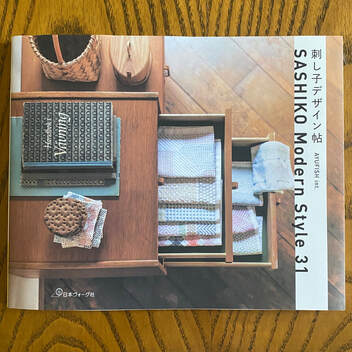
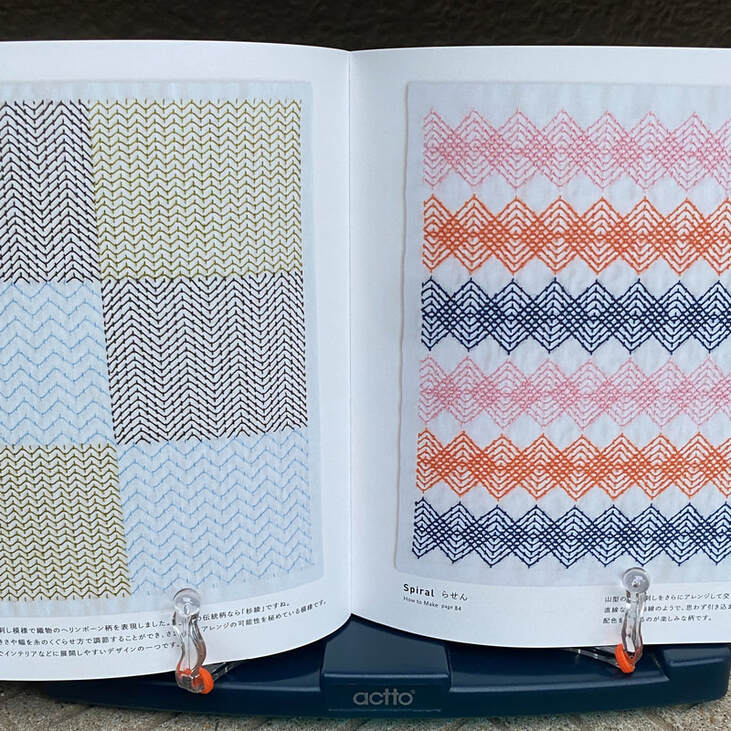
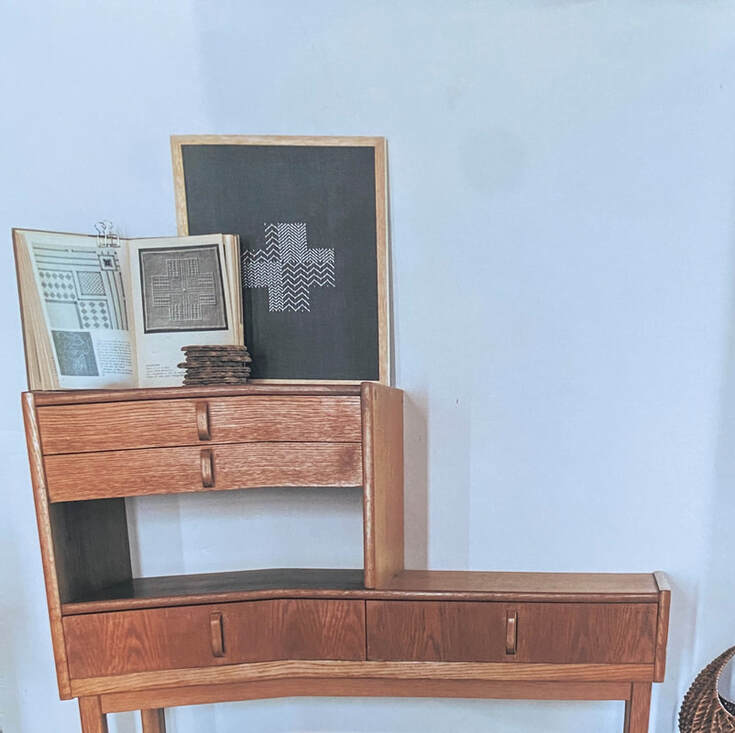
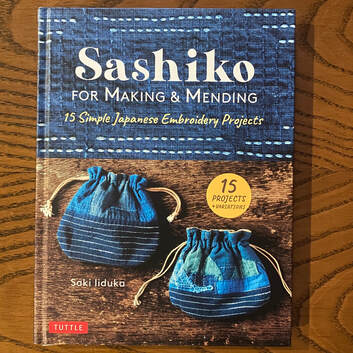

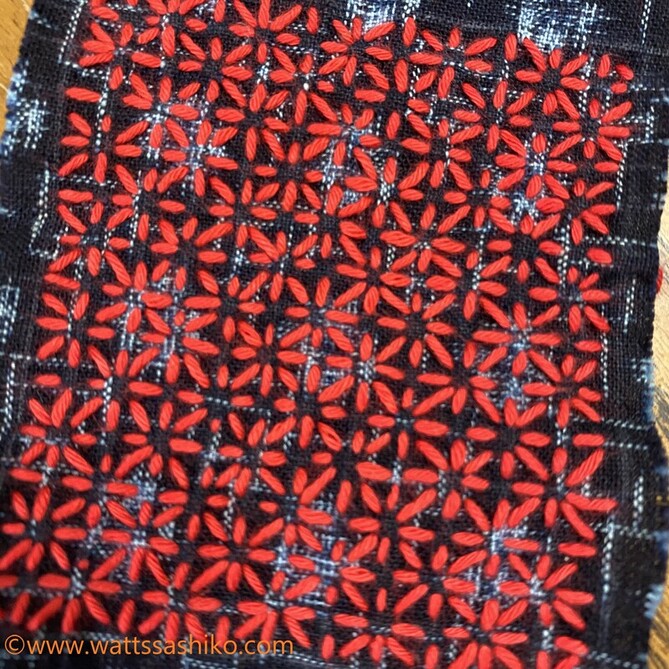
 RSS Feed
RSS Feed



